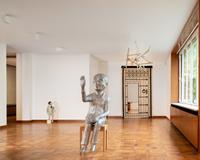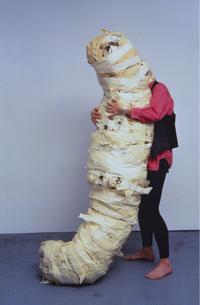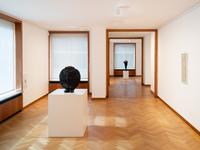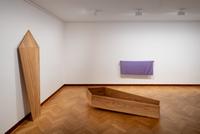Humans Nature PoliticsJoseph Beuys in the Context of the Collection–Haus Esters, Haus Lange
Complementing the exhibition at the Kaiser Wilhelm Museum, the presentation in Haus Lange and Haus Esters is dedicated to Joseph Beuys’s traces in the collection of the Kunstmuseen Krefeld.
The presentation in Haus Lange deals with the contemporary historical environment in which Beuys’s art emerged from the 1960s onwards, thus marking the beginning of his public impact. The focus is on groups of works by friends and companions such as Klaus Rinke and Jannis Kounellis, as well as contemporary positions such as Eva Hesse and Robert Morris, who were important points of reference for Beuys. The Beuys students Imi Knoebel, Blinky Palermo, and Reiner Ruthenbeck are also represented with works. Shared concerns, such as the development of a new concept of sculpture, but also biographical aspects, repeatedly build a bridge to the exhibition at the Kaiser Wilhelm Museum.
The show in Haus Esters focuses on the works of a younger generation of artists, such as Miroslaw Balka, Reinhard Mucha, and Kiki Smith, among others, who refer to Beuys in very different ways. Jana Sterbak’s examination of Beuys’s position as an “Überkünstler” (super artist) culminated in 1995 in her work Absorption: A Work in Progress, in which she dressed as a moth and ate her way through Beuys’s felt suits. Resonating with the artist collective Slavs and Tatars is above all the utopian potential of Beuys’s social-aesthetic vision. The diverse impulses of Beuys’s work are also reflected in the furniture of the designers Élodie Descoubes & Laurent Nicolas.


Absorbtion: Work in Progress, 1995
Farbfotografie, Text auf Aludibond, Courtesy Jana Sterbak und Barbara Gross Galerie, München, © Jana Sterbak

